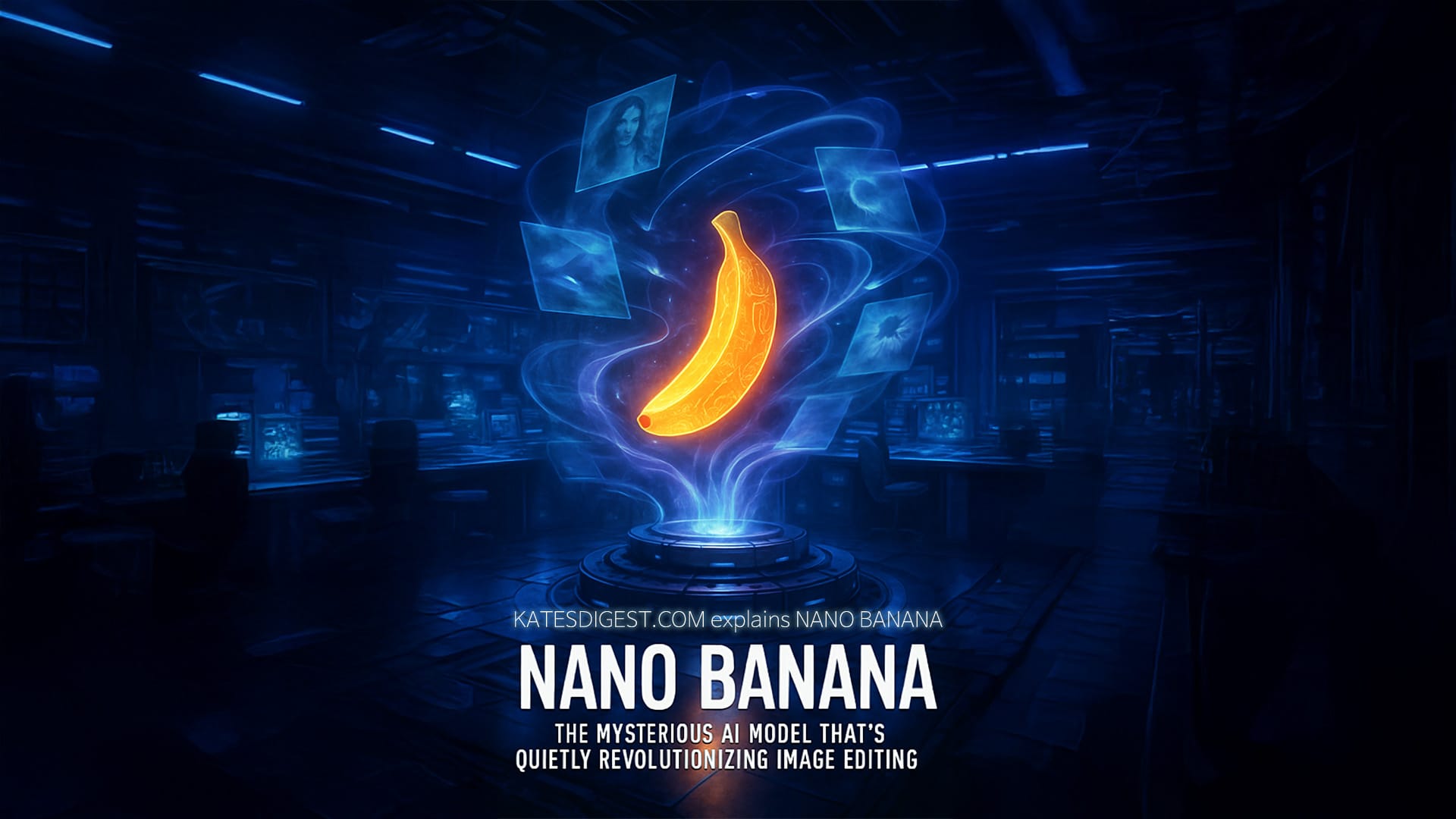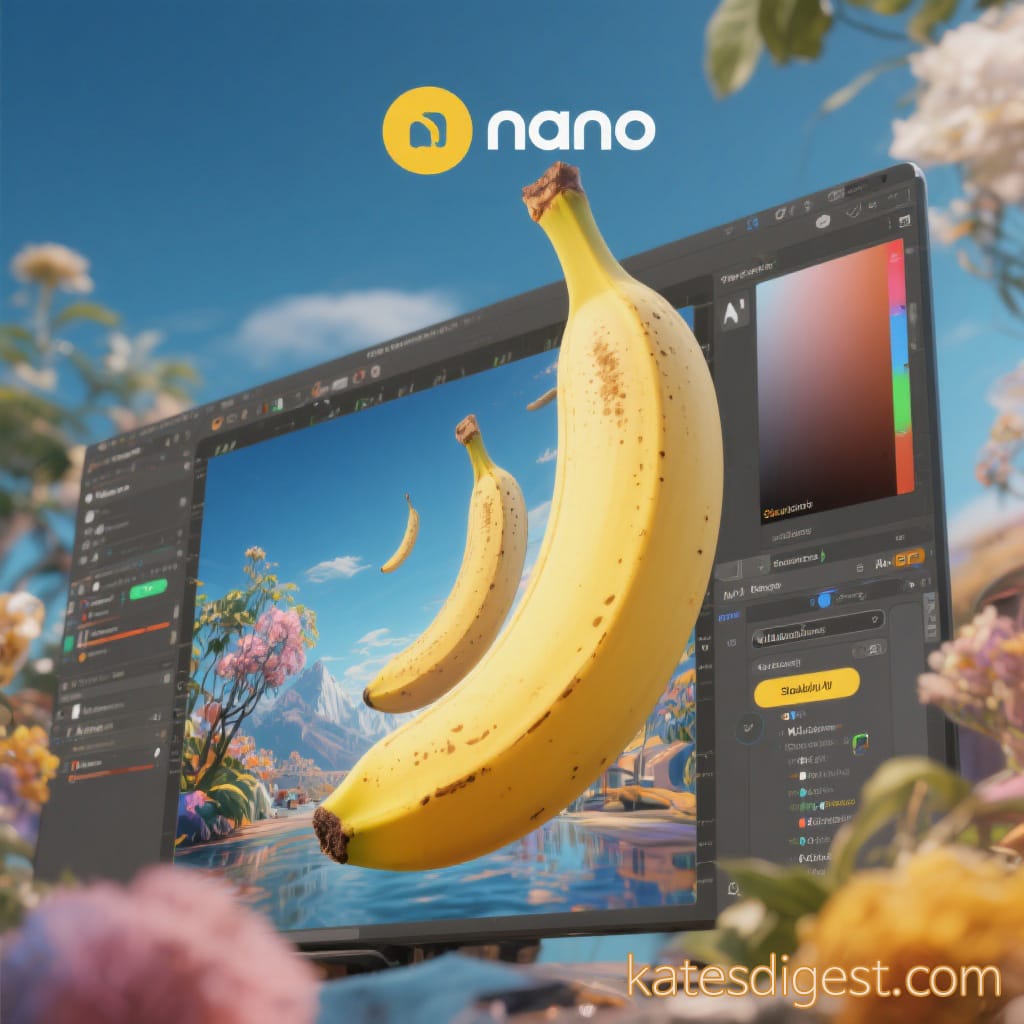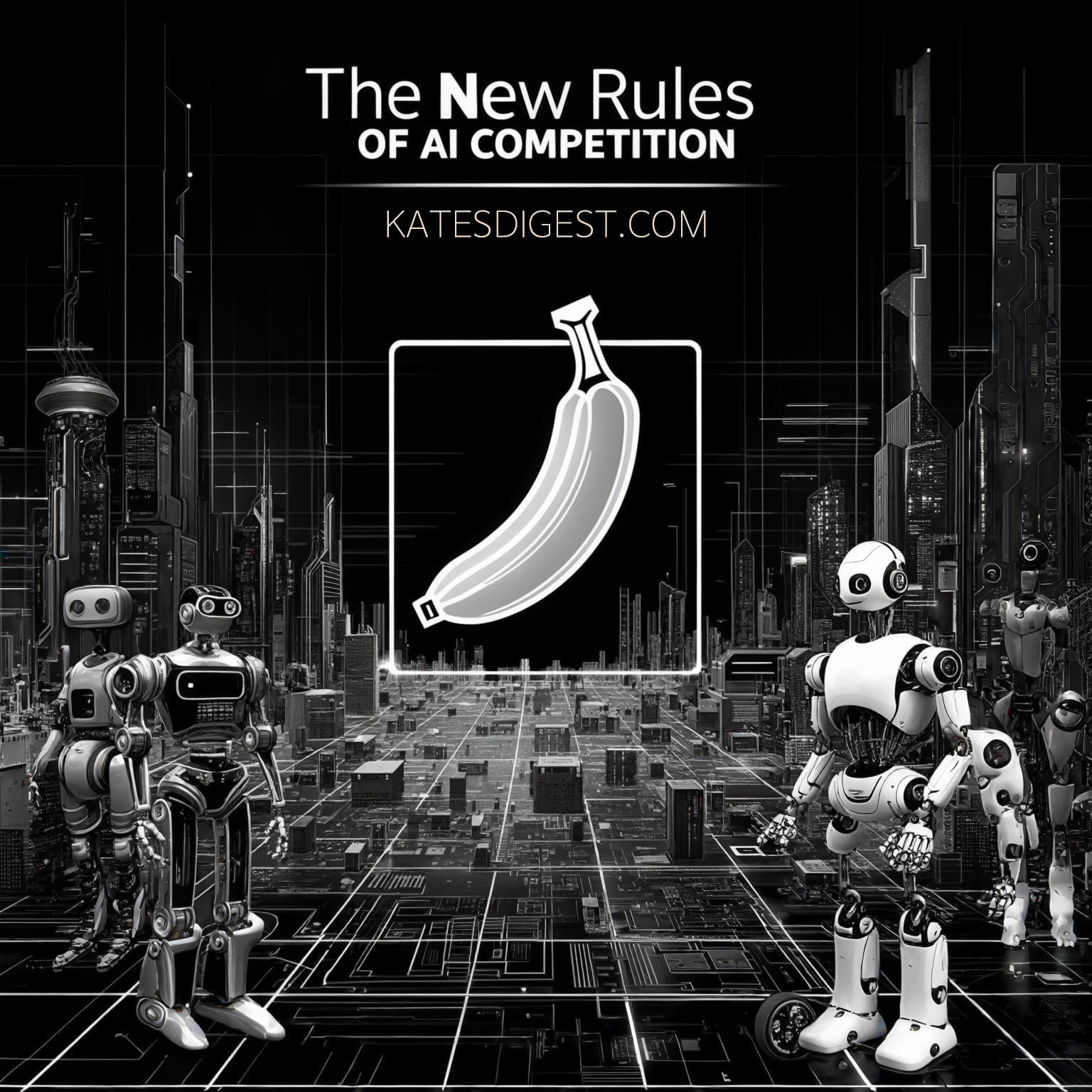Nano Banana: The Mysterious AI Model That's Quietly Revolutionizing Image Editing

In late 2024, something unusual happened in the AI image generation world. Without any fanfare, press releases, or marketing campaigns, a model simply called "nano banana" appeared on LMArena's testing platform. No one knew where it came from. No company claimed ownership. Yet within weeks, it was dominating blind tests with win rates exceeding 70%, leaving established players like FLUX Kontext in the dust. The AI community had stumbled upon something extraordinary, and the mystery only made it more intriguing.
The story of nano banana isn't just about another AI model entering the market. It's about how the democratization of AI evaluation is changing the entire landscape. When users vote blindly based purely on results rather than brand names, genuine innovation rises to the top. And nano banana? It's risen faster than anyone could have predicted.

The LMArena Revolution: Where Brands Don't Matter
To understand why nano banana's emergence matters, you need to understand LMArena itself. Born from UC Berkeley's Chatbot Arena in 2023, this platform fundamentally changed how we evaluate AI models. Instead of relying on technical benchmarks that often miss real-world performance, LMArena lets actual users vote on which model produces better results. The kicker? They don't know which model they're voting for until after they've made their choice.
This blind testing approach has become the gold standard for AI evaluation. When Andreessen Horowitz led a $100 million investment round in May 2025, valuing LMArena at $600 million, it wasn't just betting on a testing platform. It was betting on a new paradigm where community consensus trumps corporate marketing. With over 3.5 million votes cast and 400+ models evaluated, LMArena has become the place where AI models prove their worth.
The platform's Image Edit Arena, where nano banana first appeared, works on a simple principle. Users submit a prompt or editing request, two anonymous models respond, and users pick the winner. No brand bias. No preconceptions. Just pure performance. It's in this brutally honest environment that nano banana has thrived, consistently outperforming models from tech giants who've spent billions on development.
Technical Prowess That Defies Expectations
What makes nano banana special isn't just that it wins competitions. It's how comprehensively it outclasses the competition in specific areas that matter most to actual users. The numbers tell part of the story: generating 1MP images in 3-5 seconds, supporting resolutions up to 4MP, and processing speeds up to 8x faster than comparable models. But speed without quality means nothing, and this is where nano banana truly shines.
The model's standout feature is what users are calling "maskless local editing." Unlike traditional image editors that require you to manually select areas for modification, nano banana understands natural language context. Tell it to "change the person on the left's shirt to red" or "make the sky more dramatic," and it knows exactly what you mean. No selection tools, no masks, no complicated workflows. It just works, and it works with a precision that feels almost magical.
Character consistency has become nano banana's signature strength. In an era where AI-generated influencers and brand ambassadors are becoming mainstream, maintaining a consistent character across multiple images is crucial. Most models struggle with this, subtly changing facial features or losing distinctive characteristics between generations. Nano banana maintains these details with an accuracy that professional content creators describe as game-changing. One user reported maintaining perfect character consistency across over 50 different scene variations, something previously impossible without extensive manual editing.

The one-shot editing capability deserves special mention. While other models often require multiple iterations to get complex edits right, nano banana typically nails it on the first try. This isn't just convenient; it fundamentally changes the economics of AI-assisted content creation. When you're paying per generation or working against tight deadlines, getting perfect results immediately rather than after five or six attempts makes a massive difference.
Community Discovery and Viral Adoption
The way nano banana gained traction tells us something important about how AI innovation spreads in 2025. It wasn't a carefully orchestrated product launch that brought it to prominence. Instead, it was Reddit users on r/LocalLLaMA who first noticed this unnamed model consistently winning blind comparisons. Word spread organically through Discord servers, Twitter threads, and specialized AI forums.
A single tweet claiming "Google's new image model just killed Photoshop" went viral, garnering over 100,000 interactions despite no confirmation that Google was even involved. The speculation about its origins only fueled more interest. Was it Google preparing for a Pixel 10 integration? The "nano" naming certainly aligns with Google's Gemini Nano branding for on-device AI. Or could it be from Alibaba's Qwen team, known for pushing boundaries in image generation? Some even suggested it might be an independent research group that decided to test their model anonymously before going public.
Professional photographers were among the first to recognize nano banana's practical value. Product photographers found they could complete post-processing work in minutes rather than hours. Real estate agents discovered they could virtually stage properties with unprecedented realism. Marketing agencies started using it to generate campaign variations at a fraction of the traditional cost. The model wasn't just technically impressive; it was immediately useful for real-world applications.
The grassroots adoption pattern reveals something crucial about the current AI landscape. Users are becoming sophisticated enough to recognize genuine innovation regardless of its source. They're not waiting for official announcements or corporate endorsements. When something works better, word spreads fast, and adoption follows even faster.
The Dark Horse Disrupting an Industry
What makes nano banana particularly fascinating is how it's disrupting established players' carefully planned roadmaps. Companies like Adobe, Midjourney, and Stability AI have spent years building brand recognition and user bases. They release updates on predictable schedules, often with incremental improvements designed to maintain subscription revenues without cannibalizing their own products.
Nano banana doesn't play by these rules. It appeared fully formed, with capabilities that leapfrog several generations of planned improvements from established players. The model's approach to image editing feels fundamentally different, more like having a conversation with an artist who understands your vision rather than wrestling with software tools.

Consider the economics at play here. Traditional image editing software licenses cost hundreds of dollars annually. AI image generation services charge $20-60 monthly for reasonable usage tiers. But nano banana, at least in its current form on LMArena, is free to test. Some third-party sites claiming to offer access charge as little as $2.99 monthly, though without official confirmation, these should be approached cautiously. If this pricing model holds when (or if) nano banana officially launches, it could trigger a race to the bottom that reshapes the entire industry.
The model's performance in specific use cases is particularly telling. For AI influencer creation, a rapidly growing industry expected to be worth $2 billion by 2026, nano banana's character consistency is revolutionary. Creators report being able to maintain perfect character identity across hundreds of images, enabling storytelling and brand building that was previously impossible without hiring actual models.
In e-commerce, where product images directly impact sales, nano banana's ability to seamlessly modify backgrounds, adjust lighting, and enhance products without losing authenticity is transforming workflows. One furniture retailer reported reducing their product photography budget by 75% while actually improving image quality and variety.
Technical Architecture: Educated Guesses and Observable Patterns
While the actual architecture behind nano banana remains a closely guarded secret, its behavior provides clues about its underlying technology. The model appears to use some form of flow-matching technology rather than traditional diffusion methods, explaining its remarkable speed. The consistency in character preservation suggests sophisticated attention mechanisms that can identify and maintain specific features across different contexts.
The natural language understanding component seems particularly advanced, possibly incorporating techniques similar to those used in large language models. This would explain why nano banana can interpret complex, multi-step instructions that would confuse other image models. Instructions like "make it look like a Wes Anderson film but keep the modern clothing" produce results that actually understand both the aesthetic reference and the specific constraint.
Interestingly, nano banana seems to have been trained on a more diverse dataset than many competitors. It handles non-Western faces, clothing, and cultural contexts with unusual accuracy, suggesting either a deliberately inclusive training approach or access to datasets that other models haven't utilized. This could provide a clue about its origins, as different companies have varying philosophies and capabilities regarding training data diversity.
The Implications for Creative Professionals
The emergence of nano banana is forcing creative professionals to reconsider their relationship with AI tools. Unlike previous generations of AI image models that were good for inspiration but required significant manual refinement, nano banana produces finished work. This isn't just an efficiency improvement; it's a fundamental shift in the creative process.
Graphic designers are finding that their role is evolving from pixel manipulation to creative direction. Instead of spending hours perfecting selections and adjustments, they're focusing on conceptualization and strategic thinking. One designer described it as "finally being able to work at the speed of thought." The tedious technical work that once consumed most of their time can now be delegated to AI, freeing them to focus on what humans do best: creative problem-solving and emotional storytelling.

Photographers face a more complex transition. While nano banana can't replace the act of capturing a moment, it's revolutionizing post-production. Wedding photographers report being able to deliver edited albums in days rather than weeks. Portrait photographers can offer clients variations that would have been prohibitively expensive to shoot traditionally. But this efficiency comes with existential questions about the value and authenticity of photographic work.
The advertising industry is perhaps experiencing the most dramatic shift. Campaign development that once required weeks of photography, retouching, and iteration can now happen in real-time during client meetings. One creative director reported developing and presenting five completely different campaign directions in a single afternoon, something that would have taken months and hundreds of thousands of dollars just two years ago.
Looking Forward: The Mystery Continues
As we move deeper into 2025, the mystery of nano banana only grows more intriguing. Despite months of speculation and investigation, no company has stepped forward to claim ownership. This silence might be strategic. By allowing the model to prove itself without corporate baggage, its creators are letting performance speak louder than marketing.
Several scenarios could explain nano banana's origins and future. If it's indeed a Google project, we might see it integrated into the Pixel ecosystem or offered as part of Google's broader AI suite. The timing would align with Google's push to compete more aggressively in the generative AI space. If it's from an independent team, we might be witnessing the birth of a new major player in the AI industry, one that chose to build credibility through performance rather than pedigree.
There's also the possibility that nano banana is a research project that was never intended for commercial release. Academic institutions and research labs often test models on public platforms to gather data and feedback. The mysterious nature and lack of official documentation could indicate that this is an experiment in understanding user preferences and pushing technical boundaries rather than a product launch.
The broader implications extend beyond just nano banana itself. Its success on LMArena demonstrates that the AI industry's traditional moats – massive computing resources, proprietary datasets, and brand recognition – might not be as insurmountable as once thought. If an unknown model can appear from nowhere and dominate established players, it suggests that innovation in AI is far from plateauing.
The New Rules of AI Competition
Nano banana's emergence is rewriting the playbook for how AI models compete and succeed. In the past, launching an AI model required massive marketing budgets, partnerships with established platforms, and the backing of known institutions. Nano banana proved that none of that matters if your product genuinely outperforms the competition.
This shift toward meritocracy in AI evaluation is healthy for the industry. It forces established players to focus on actual improvements rather than incremental updates designed to maintain subscription revenues. It gives innovative teams, regardless of their resources or connections, a fair shot at recognition. And most importantly, it ensures that users get access to the best technology available, not just the best-marketed technology.

The community-driven evaluation model that elevated nano banana also provides valuable lessons for future AI development. Rather than optimizing for synthetic benchmarks or cherry-picked examples, developers must create models that perform well in real-world scenarios chosen by actual users. This alignment between development goals and user needs should accelerate practical improvements in AI capabilities.
Conclusion: A Glimpse of AI's Democratic Future
The nano banana phenomenon represents more than just another AI model entering the market. It's a demonstration of how the AI industry is evolving toward greater transparency, accountability, and user empowerment. When models are judged blindly on their merits rather than their makers, innovation thrives.
Whether nano banana emerges from the shadows with a grand reveal or continues to operate in mystery, its impact is already being felt. It has raised the bar for what users expect from AI image editing. It has proven that unknown players can disrupt established markets. And perhaps most importantly, it has shown that the future of AI will be shaped not by corporate boardrooms but by the collective judgment of millions of users voting with their clicks.
As creative professionals, businesses, and everyday users continue to discover and utilize nano banana's capabilities, one thing becomes clear: the age of AI democratization isn't coming – it's already here. And if a mysteriously named model can reshape an entire industry simply by being better, imagine what other surprises await us in the rapidly evolving landscape of artificial intelligence.
The mystery of nano banana might never be fully solved, but perhaps that's fitting. In an industry often dominated by hype and speculation, here's a model that lets its performance do all the talking. And based on what users are saying, it's speaking volumes.
